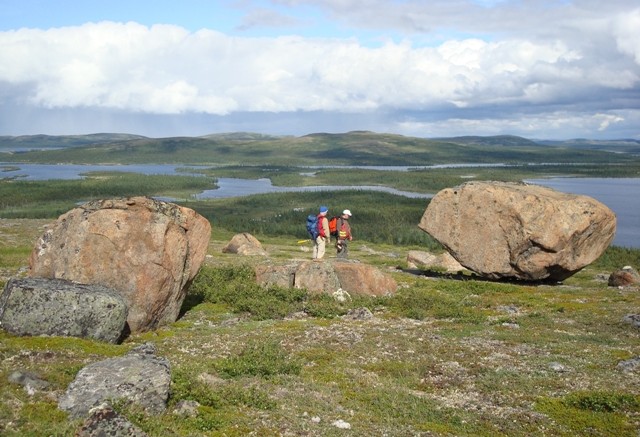Quest Uranium (QUC-V) quickly built its reputation on the potential of the Strange Lake rare earth elements project. Now the Montreal-based company is starting to put some hard numbers behind the property in northeastern Quebec.
On April 7 Quest released a national instrument 43-101 compliant resource estimate for the project which outlined an inferred resource of 114.8 million tonnes grading 0.999% total rare earth oxides (TREO), 1.973% zirconium oxide, 0.208% niobium pentoxide, 0.053% hafnium oxide and 0.082% beryllium oxide.
The resource was calculated using cut-off grade of 0.85% and came from an area known as the B-Zone.
Also of significance from the report was the deposit’s average specific gravity of 2.72 grams per cubic metre and the fact that heavy rare earths – which are more valuable than light rare earths — represent between 43% and 51% of the TREO in the deposit.
The estimate was based on 19 drill holes for 3,905.3 metres of diamond drilling.
And while the inferred resource points to some of the promise at the B-zone, much of the enthusiasm for the company – as demonstrated by its share price run-up to $3.97 from the 5¢ level it was trading at just one year ago – comes from the prospect of the company outlining more tonnage in the near future.
That belief is based not only on the B-zone being open in all direction (with drilling having stopped in mineralization at depth) but also on the identification of four other targets within a 20 km strike length that bear remarkably similar characteristics to the B-Zone.
To better understand such targets Quest is launching an aggressive drill campaign in the coming months.
Quest will spend $7 million on an exploration campaign for the summer that will see four drill rigs cutting 15,000 metres on the property as trenching, geological mapping and geochemical sampling are also done.
To pay for it, Quest will draw on the $5.1 million it currently has in the kitty. For the rest, chief executive Peter Cashin says the exercise of warrants that are currently in-the-money will be sufficient.
The summer programs, which is set to get underway in June, calls for one drill rig to drill a total of 2,000 metres on new areas of surface mineralization discovered on the property last year.
The main focus of the program, however, will be the B-Zone. Quest plans to put 13,000 metres of drill holes into the deposit with on drill upgrading the resource into the measured and indicated category, while another more powerful drills test the vertical extent of the system.
A fourth drill will be used to explore the eastern half of the B-Zone’s radiometric anomaly. If all goes well, the drill will outline more inferred resources for the zone.
Quest has also been busy setting up a permanent, winterized camp at the property.
Cashin estimates capex of the camp at $650,000 to build but says the money will be well spent as the camp will increase efficiency and allow Quest to drill through the winter.
Up until now, Quest has been operating from a base camp that sits roughly 50-km from property.
But what is perhaps more pressing for investors are the results from ongoing metallurgical testing.
Cashin says those results should be in by late May, and once they are in, Quest will be able to push ahead on a scoping study. Cashin says that study could be ready a month after metallurgical testing results come in.
And while the project is still at an early stage in terms of outlining its full mineral potential, Cashin says the scoping study will incorporate cash flow modeling to give investors a sense of the economics of the deposit.
And while the economics Strange Lake is crucial to any potential investor, there is little doubt that the company’s dramatic rise on the market is also tied to the growing interest in sourcing rare earth metals from places that are not China.
At present, the Asian behemoth produces 97% of the world’s rare earth metals, but the country has recently placed strict controls on rare earth elements mining in an effort to better secure supply for its national industries.
The move by China tipped the rare earth elements market from oversupply to demand shortages.
Another positive for Quest is the fact that 98% of the rare earth elements produced in China are of the more common light rare earth variety.
In a press release, the company argues that a lack of an abundant supply of heavy rare earths has slowed down the development of technologies which use them.
Strange Lake’s high heavy rare earth’s content, would make it, Quest says, one of the world’s only potential primary sources of the metals.


Be the first to comment on "Quest outlines rare earths at Strange Lake"